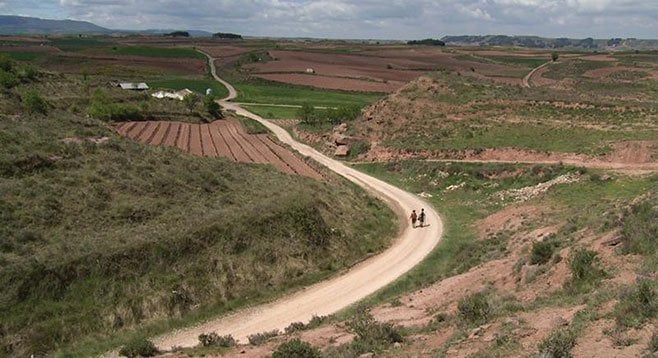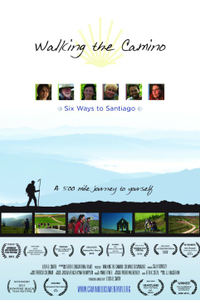
Walking the Camino, an intermission
Near the end of Walking the Camino: Six Ways to Santiago
— Lydia Smith’s finely observed documentary about travelers along
Spain’s 500-mile pilgrim trail, the Camino de Santiago — one of the
pilgrims makes a rare misstep into cliché and reminds the viewer that
life itself is a journey, much like the Camino. But even then, there is
art in the platitude: he’s arguing that this particular journey is an
intermission from the larger trek from birth to death.
The walk, while frequently
meditative, is not quite a retreat: shared experience with fellow
travelers seems integral to the experience presented here. And despite
the pastoral vistas, it’s not transcendent in the way that aesthetic
experience can be. Rather, the Camino provides our seven subjects with a
shift in perspective, a slowing down, a break from the necessity of
doing anything but walking, and a chance, in the words of one pilgrim,
to leave behind “the need to be something other than what I am.”
 The walk ends at a church and
includes stops at numerous abbeys — an inevitable dash of Christianity,
given the route’s history. Also, many of the trappings of religious
experience are on display: the stripping away of material goods, the
contemplation of personal failings, and happily, the compassion for
one’s neighbor that Jesus mentioned once or twice. (When a stranger
carries Angeleno Annie’s backpack because she is suffering, she marvels,
“I don’t think I’ve ever been that kind to anyone. I was humbled.”) But
the journey that the film captures is much more personal than
spiritual, even as the two almost inevitably get conflated, particularly
in the case of those who are already religious. (One observer notes,
“You will not find Him unless you take Him with you.”)
The walk ends at a church and
includes stops at numerous abbeys — an inevitable dash of Christianity,
given the route’s history. Also, many of the trappings of religious
experience are on display: the stripping away of material goods, the
contemplation of personal failings, and happily, the compassion for
one’s neighbor that Jesus mentioned once or twice. (When a stranger
carries Angeleno Annie’s backpack because she is suffering, she marvels,
“I don’t think I’ve ever been that kind to anyone. I was humbled.”) But
the journey that the film captures is much more personal than
spiritual, even as the two almost inevitably get conflated, particularly
in the case of those who are already religious. (One observer notes,
“You will not find Him unless you take Him with you.”)
It’s important to note that the
documentary is much more concerned with the pilgrims/travelers than it
is with the Camino itself. It will tell you that Christians used to walk
the trail as a form of penance in the Middle Ages, ending their journey
at the alleged tomb of the apostle James. It won’t tell you that before
that, the trail served pagans as they walked a little further on to the
sea for their own sort of spiritual experience. And it doesn’t need to
tell you this because the people are the point, not the road. Also
because these days, the pagans and Christians are walking side by side.
Their reasons are various, and so are their ultimate experiences. What’s
common is that none of the seven people Smith follows expresses regret
or disappointment at the end of the road.
Besides the aforementioned
Annie, Smith follows Tomás, a young man looking for a physical
challenge; Wayne and Jack, a widower and the Episcopal priest who
presided at the funeral; Misa, a young woman who thinks she needs some
time alone; Sam, a Brazilian woman who has lost nearly everything; and
Tatiana, the only one doing the walk explicitly “for God” (for company,
she has her young son and her atheist brother). Some encounter
challenges, some encounter surprises, and one or two walk their way into
epiphanies under the watch of Smith’s sympathetic eye.



No hay comentarios:
Publicar un comentario